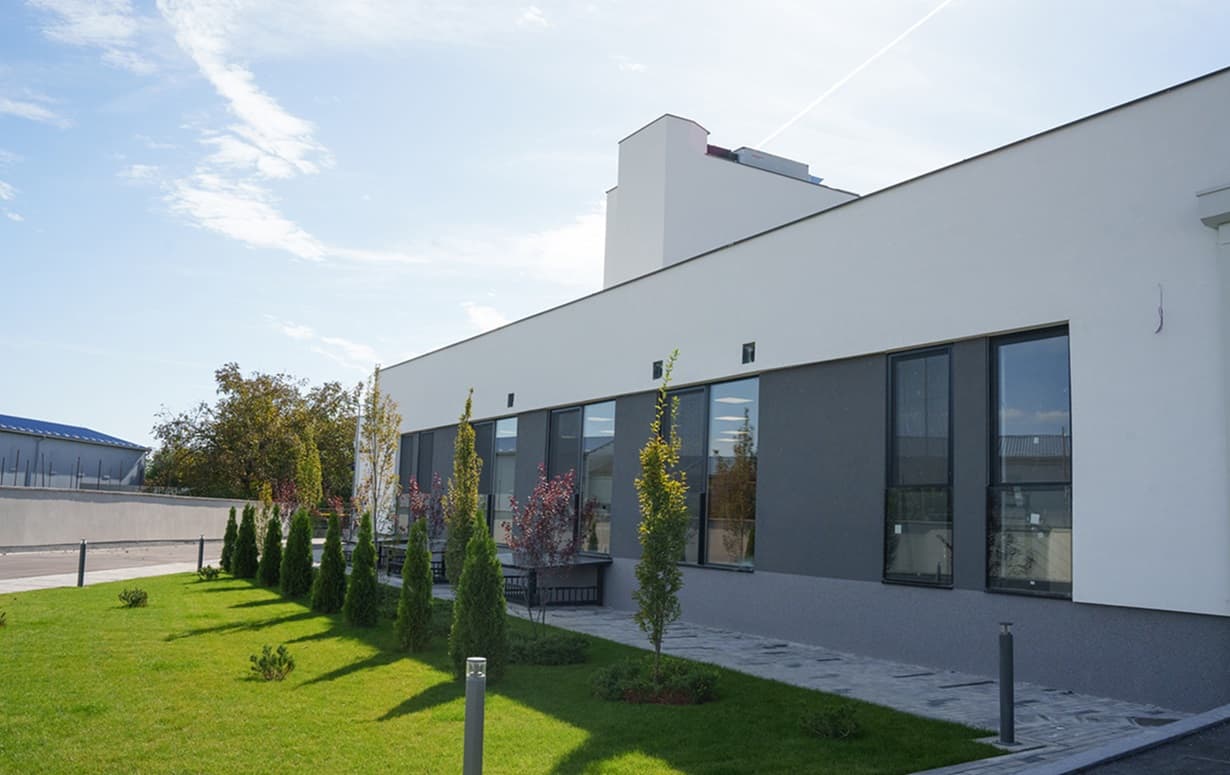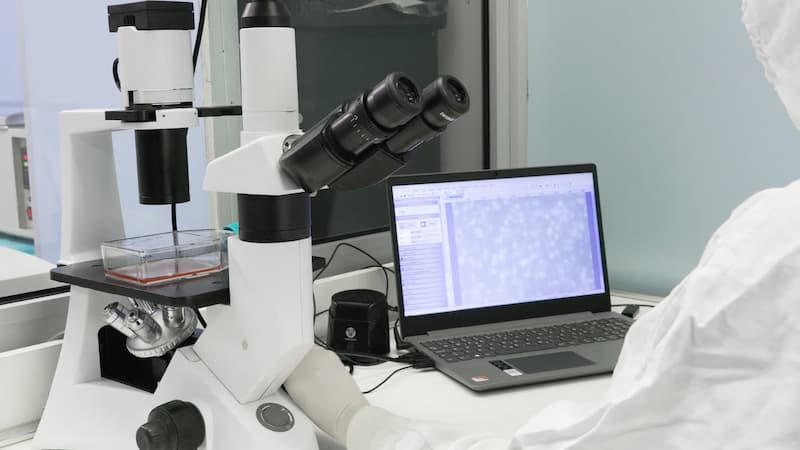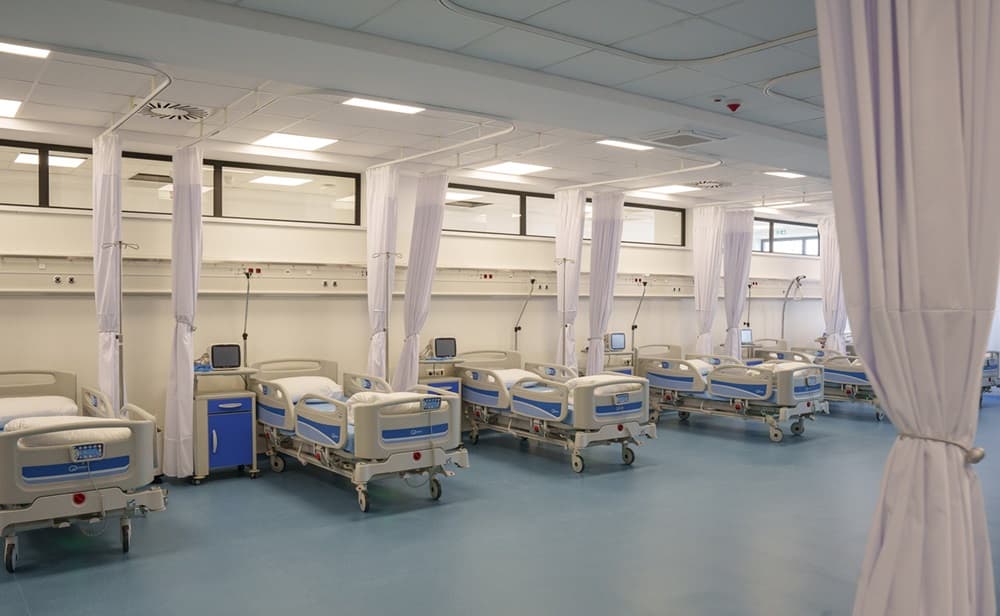Have you ever experienced that frustrating shoulder stiffness, limiting your ability to move freely? Shoulder pain affects approximately 16% of adults, impacting athletes during intense training, young people due to repetitive movements, and older adults as a result of natural joint degeneration.
The impact of shoulder conditions on daily life varies greatly, ranging from mildly annoying discomfort that impairs concentration at work to severe pain that interferes with everyday activities such as reaching for overhead objects or driving.

While traditional methods such as medication and surgery exist, stem cell therapy for shoulders is a promising new approach that has the potential to benefit and enhance other recovery methods. It is not a universal solution, but when combined with a comprehensive rehabilitation plan, it accelerates recovery and assists patients in returning to a normal way of life.
This article explores the principles of stem cell treatment for shoulders, its benefits, and the potential outcomes for patients.
Common Shoulder Conditions Treated with Stem Cells
There is usually more than one cause for shoulder pain, and it manifests itself in a web of interrelated issues affecting the many structures that surround the shoulder joint.
Rotator Cuff Tears
The rotator cuff, a group of muscles and tendons surrounding the shoulder joint, is particularly vulnerable to injury. Tears, impingement (compression of tendons), and tendinopathy are frequent causes of shoulder pain and weakness.
How stem cells impact on this condition
Stem cell treatment for shoulders may help to repair torn rotator cuff tendons, reducing pain and improving shoulder strength and range of motion.
Shoulder Arthritis
Osteoarthritis, the “wear-and-tear” type of arthritis, can erode the cartilage within the shoulder joint, leading to pain, stiffness, and reduced range of motion. Learn more about arthritis treatment with stem cells in our dedicated article.
How stem cells impact on this condition
Stem cell therapy for shoulder arthritis can help to regenerate damaged cartilage in the shoulder joint, reducing pain and improving joint function.
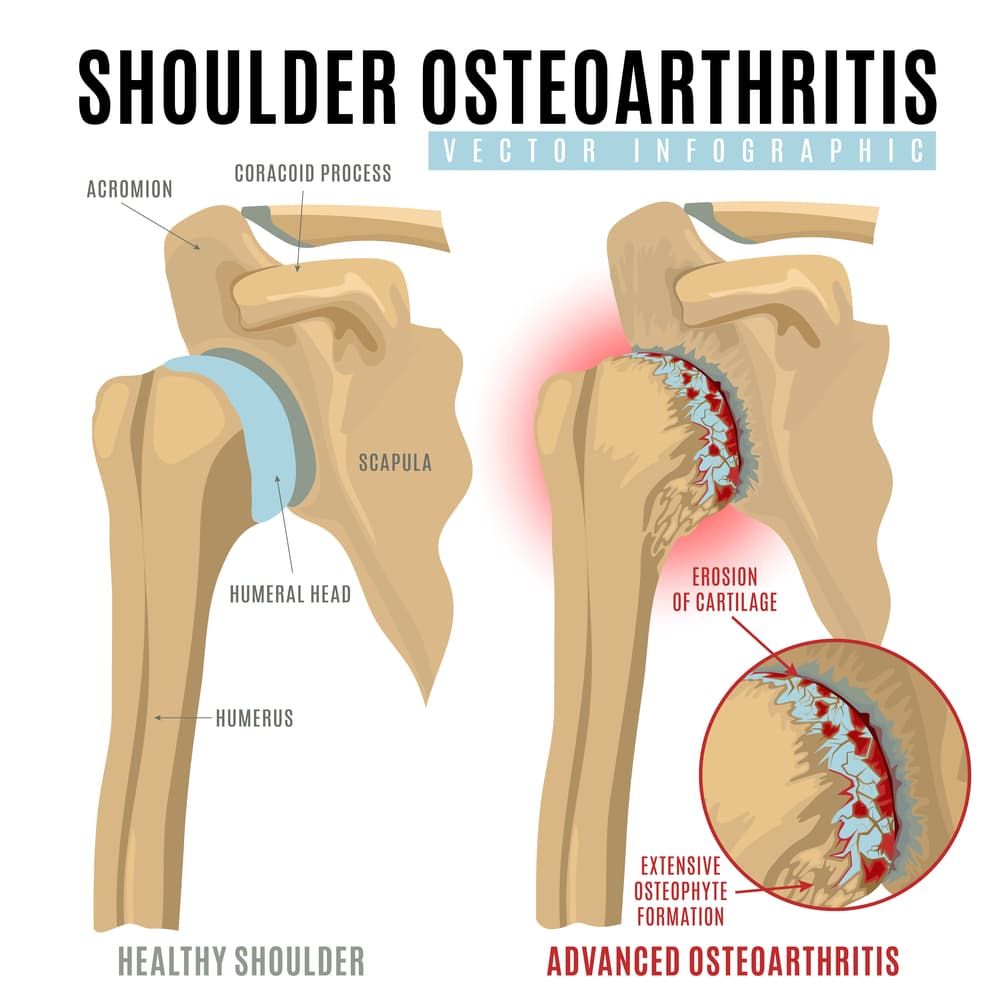
Discover more about arthritis treatment with stem cells, the procedure, and patient testimonials.
Read moreTendonitis & Bursitis
Overuse, repetitive motions, and sudden injuries can lead to muscle strains such as:
- Tendonitis—an inflammation of tendons, like the rotator cuff tendons,
- Bursitis—an inflammation of fluid-filled sacs that cushion the joint.
How stem cells impact on this condition
Stem cell treatment for shoulder tendonitis can reduce inflammation and promote healing in tendons and bursae, alleviating pain and improving shoulder function.
Frozen Shoulder or Adhesive Capsulitis
This condition involves inflammation and thickening of the joint capsule, resulting in pain, stiffness, and a severely restricted range of motion. Its cause is often unknown but can be associated with certain medical conditions like diabetes.
How stem cells impact on this condition
Stem cell therapy for shoulders may help to break up scar tissue and improve range of motion.
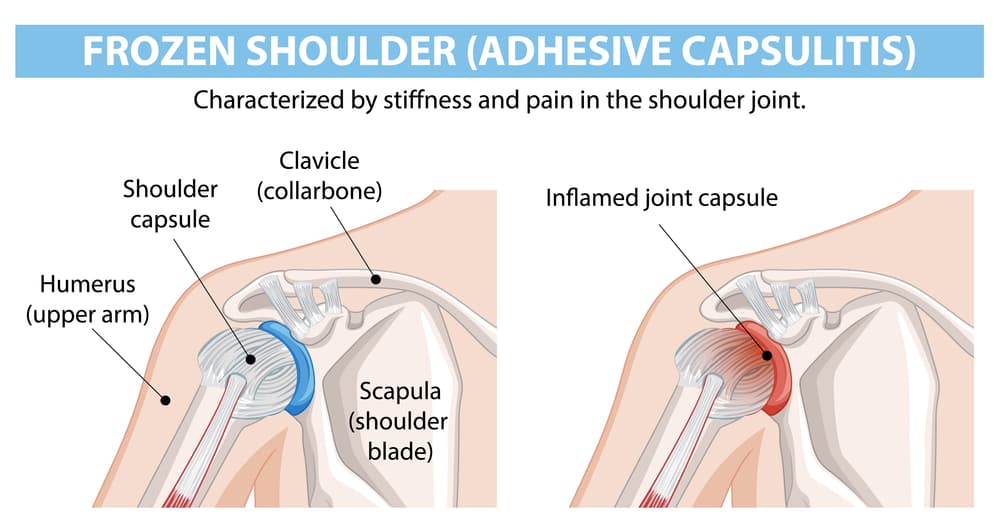
Labrum Tears & Shoulder Instability
The labrum is a ring of cartilage that stabilizes the shoulder joint. Tears, often caused by trauma or repetitive overhead motions, can result in pain, clicking, and a feeling of instability.
Shoulder instability, often due to a previous dislocation, can lead to pain and a feeling that the shoulder is “loose” or prone to slipping out of its socket.
How stem cells impact on this condition
Stem cell treatment for shoulder instability and labrum tears can help repair torn labral cartilage and stabilize the joint, reducing pain and preventing recurrent dislocations.
What Is Stem Cell Treatment for Shoulders?
Stem cell treatment for shoulders is a regenerative medicine approach that utilizes the body’s own stem cells to repair damaged tissues and alleviate pain in the shoulder joint. Unlike traditional treatments that focus on symptom management, stem cell therapy for shoulder injury aims to address the underlying cause of the pain by promoting healing at a cellular level.
How Do Stem Cells Work in Shoulder Treatment and Similar Conditions?
Stem cells for shoulder injury or other conditions can create a unique environment for cartilage, bone, and tendon cells to repair. Once injected into the damaged shoulder, the stem cells travel through the bloodstream, seeking out areas of inflammation or tissue damage
Upon reaching the injured site, stem cells secrete a complex array of growth factors, which stimulate cellular proliferation and differentiation, facilitating the regeneration of cartilage, bone, and tendon tissues.
Cells release the following substances:
- Chemokines, signaling molecules that recruit endogenous progenitor cells and other crucial immune cells to the injury site, augmenting the healing response.
- Adhesion molecules that mediate cell-to-cell interactions, ensuring coordinated communication and collaboration among the various cellular components involved in tissue repair.
This multifaceted mechanism promotes angiogenesis, enhancing microvascular circulation and nutrient delivery to the damaged tissues while simultaneously mitigating inflammation. The resulting microenvironment fosters an optimal setting for tissue regeneration and functional recovery in the affected shoulder joint.
Investigate how stem cells for sports injuries work and how they boost the rehabilitation process.
Read moreWhy Are Stem Cells Used for Shoulder and Sports Injuries?
Stem cells offer a compelling alternative to traditional treatments for sports injuries because they have the potential to:
- Promote natural recovery: They work with the body’s own mechanisms to promote neuronal growth, blood circulation, and muscle and joint recovery.
- Provide longer-lasting relief: By addressing the root cause of the pain, stem cell treatment for shoulders may offer more sustainable results than treatments.
- Reduce the need for surgery: In some cases, stem cell therapy may help patients avoid or delay the need for invasive surgical procedures.
Stem Cells vs. Traditional Shoulder Pain Treatments
Minor injuries are typically treated using the PRICE method:
- Protection: Protect the injured area from further harm (e.g., with a brace).
- Rest: Avoid using the injured area to allow it to restore.
- Ice: Apply ice packs to reduce swelling and pain.
- Compression: Use a bandage to compress the area and minimize swelling.
- Elevation: Keep the injured area elevated above your heart to further reduce swelling.
Pain relief can be achieved with over-the-counter medications or, for more severe cases, corticosteroid injections.
Serious shoulder injuries, like fractures, may necessitate surgery, with full recovery potentially taking up to a year or more.
Stem cells for shoulder tears, when combined with traditional therapies or surgery, may improve rehabilitation outcomes.
| Stem cell therapy for shoulder injury | Traditional treatments |
| Addressing the underlying cause of pain by healing | Symptom management |
| Potentially long-lasting relief | Often temporary relief |
| Minimally invasive injection | Can range from non-invasive to highly invasive (surgery) |
| Generally considered safe with minimal side effects | Potential side effects depending on the specific treatment |
How Can Stem Cells Help with Shoulder Pain?
Stem cells for shoulder repair offer several mechanisms for alleviating shoulder pain:
Repairing Damaged Cartilage
They can stimulate the growth of various cell types, most notably chondrocytes, which form cartilage. This helps to repair cartilage damage caused by osteoarthritis or injury, reducing pain and improving joint function.
Reducing Inflammation Naturally
After stem cell injections for the shoulder, anti-inflammatory molecules are released, which help to reduce swelling and pain in the joint. This can be particularly beneficial for conditions like tendonitis and bursitis.
Supporting Ligament and Tendon Healing
Stem cells can promote the growth of cells that produce collagen, the primary protein in ligaments and tendons. Stem cell treatment for shoulder injuries can help to strengthen and repair damaged ligaments and tendons, resulting in improved shoulder stability and function.
Types of Stem Cells Used in Shoulder Pain Treatment
At Swiss Medica, we utilize only mesenchymal stromal cells (MSCs) to address shoulder pain. They have regenerative properties and anti-inflammatory effects that can contribute to pain relief and support a faster recovery. For the stem cell treatment for shoulder arthritis, we mostly use these types of stem cells:
| Autologous stem cells | Stem cells harvested from the patient’s own body (e.g., bone marrow or adipose tissue). |
| Allogeneic stem cells | Stem cells derived from a donor. |
What to Expect from Stem Cells for Shoulder Pain?
If you’re considering stem cells for shoulder pain, it’s essential to understand the process involved and the potential outcomes you might anticipate. Here’s a brief overview of what happens before and after the stem cell injections for the shoulder.
How Does the Procedure Work?
The typical stem cell procedure involves these steps:
- Harvesting: Stem cells are usually harvested from your own body, most commonly from bone marrow or adipose (fat) tissue.
- Processing: The harvested stem cells are processed in a lab to concentrate them.
- Stem cell injection for shoulder: The concentrated stem cells are injected directly into the damaged area of the shoulder, often guided by ultrasound or fluoroscopy for precise placement.
- Rehabilitation: After the injection, you’ll typically be given specific instructions for post-procedure care, which may include rest, immobilization for a short period, and a tailored rehabilitation program involving physical therapy.
When Will I See Results?
The timeline for seeing results from stem cell treatment for shoulders can vary from patient to patient. Some individuals may experience pain relief within a few weeks, while others may take several months to notice significant improvement. The recovery process is gradual because stem cells for shoulder injury take time to reach the damaged area and begin working.
What Are the Success Rates?
Success rates for stem cell treatment for shoulder pain vary depending on the specific condition being treated, the severity of the damage, and individual patient factors.
At Swiss Medica, we have an 80% success rate, which is supported by patient testimonials.
Stem cell therapy isn’t a magic pill. Make an informed decision for your health by having an open and thorough discussion with both your doctor and a qualified regenerative medicine specialist before beginning any stem cell treatment.
Who Can Benefit from Stem Cell Therapy for Shoulder Pain?
To determine whether stem cell treatment for the shoulder can benefit you, specialists must first understand the stage and specificity of the issue. Candidates could be:
- Individuals with chronic shoulder pain that hasn’t responded well to traditional treatments.
- Patients with rotator cuff tears, osteoarthritis, tendonitis, or other shoulder conditions.
- Those seeking to improve the results after surgery.
- Athletes who want to return to sports quickly. Learn more about stem cells for sports injuries.
Get a free online consultation
Start with simple steps. Schedule a comprehensive consultation with one of our medical advisors to determine if stem cell therapy could help alleviate your shoulder pain.

Medical Advisor, Swiss Medica doctor
Is Stem Cell Therapy Safe for Shoulder Pain?
Stem cells for shoulder arthritis and similar conditions are generally considered safe when performed by a qualified and experienced medical professional. However, as with any medical procedure, some patients may experience mild pain or discomfort after receiving a stem cell injection for the shoulder, which usually subsides within a few hours.
It’s crucial to discuss the potential risks and benefits with a regenerative specialist before proceeding with treatment.
Choosing the Right Clinic for Stem Cell Treatment for Shoulders
Choosing a reputable and experienced clinic is critical for a safe and effective therapy with stem cells for shoulder arthritis. Look for clinics that:
- Find qualified and experienced medical professionals.
- Check for both negative and positive patient testimonials.
- Learn more about the clinic’s commitment to stem cell research.
Swiss Medica, a stem cell center, has been treating a wide range of conditions since 2011, including autoimmune disorders, chronic shoulder pain, arthritis, and more. Over 10,000 people from all over the world have benefited from our care. We offer:
| Personalized treatment plans | Our regenerative specialists will carefully look over your medical history and come up with a treatment plan that may include stem cell therapy, other procedures, and care after the treatment. You will have a clear understanding of stem cell therapy shoulder’s cost. |
| All-Inclusive care | In addition to our round-the-clock medical care, our patients also have access to healthy meals tailored to their specific dietary needs and a convenient transfer service that can pick them up from Belgrade airport. |
| State-of-the-art facilities | Our medical facility features comfortable rooms outfitted with all necessary equipment. The hospital is brand new, and patients stay in hotel-style rooms during their treatment. |
| Own stem cell production | In our in-house lab, we use and produce ethically sourced, high-quality stem cells while adhering to strict quality control. |
We provide all necessary facilities for patients and have an A-grade laboratory with rigorous cleanliness standards. Before and after stem cell injections for shoulder arthritis, you can relax in your room or go around Belgrade Old City.
How Much Does Stem Cell Therapy for Shoulders Cost?
Stem cell therapy for shoulder costs vary greatly depending on the clinic, the type of stem cells used, and the duration of the treatment. It’s essential to inquire about all costs involved upfront and understand what’s included in the treatment package.
For example, stem cell therapy for the shoulder in the UK typically costs between €10,000 and €50,000. The average stem cell injections for the shoulder cost in Serbia is between €7,000 and €31,000*.
*The shoulder stem cell injection costs mentioned are indicative and subject to change based on individual factors, including the condition’s severity and the number of stem cells needed. Prices are valid as of January 2025.
Frequently Asked Questions About Stem Cell Therapy for Shoulders
1. How many stem cell injections will I need?
The number of injections can vary depending on the individual case, the severity of the condition, and the specific protocol used by the clinic. While some protocols recommend a series of injections spaced out over time, others only require a single stem cell injection for shoulder arthritis.
Your regenerative medicine specialist will determine the most appropriate course of treatment for you.
2. What is the recovery time after stem cell treatment for shoulder injury?
Recovery time can vary depending on the individual and the specific procedure. In general, there may be some initial soreness or discomfort after the injection. You’ll likely be advised to rest and avoid strenuous activity for a period of time.
A tailored physical therapy program is typically prescribed to help strengthen the shoulder and restore function. It can take several weeks to months to see the full benefits of the stem cell therapy for shoulder arthritis and other issues.
3. Can stem cell therapy cure my shoulder pain completely?
While stem cell therapy offers the potential for significant pain relief and improved function, it’s important to have realistic expectations. The success rate can vary depending on factors such as the severity of your condition, your age, and your overall health.
4. What are the alternatives to stem cell therapy for shoulder pain?
There are several alternative treatment options for shoulder pain, including:
- Physical therapy and rehabilitation
- Pain medication (over-the-counter or prescription)
- Corticosteroid injections
- Arthroscopic surgery (for conditions like rotator cuff tears or labral tears)
- Joint replacement surgery (for severe arthritis)
Contact us
We will help you set realistic expectations for stem cell treatment for shoulders, including success rates and costs. Schedule a free online consultation with our regenerative specialist to discuss possible shoulder recovery strategies.

Medical Advisor, Swiss Medica doctor
List of References
Lucas J, van Doorn P, Hegedus E, Lewis J, van der Windt D. A systematic review of the global prevalence and incidence of shoulder pain. BMC Musculoskelet Disord. 2022 Dec 8;23(1):1073. doi.org/10.1186/s12891-022-05973-8
Chun SW, Kim W, Lee SY, Lim CY, Kim K, Kim JG, Park CH, Hong SH, Yoo HJ, Chung SG. A randomized controlled trial of stem cell injection for tendon tear. Sci Rep. 2022 Jan 17;12(1):818. doi.org/10.1038/s41598-021-04656-z
Valencia Mora M, Ruiz Ibán MA, Díaz Heredia J, Barco Laakso R, Cuéllar R, García Arranz M. Stem cell therapy in the management of shoulder rotator cuff disorders. World J Stem Cells. 2015 May 26;7(4):691-9. doi.org/10.4252/wjsc.v7.i4.691
Jo CH, Chai JW, Jeong EC, Oh S, Yoon KS. Intratendinous Injection of Mesenchymal Stem Cells for the Treatment of Rotator Cuff Disease: A 2-Year Follow-Up Study. Arthroscopy. 2020 Apr;36(4):971-980. doi.org/10.1016/j.arthro.2019.11.120
MD, Pediatrician, Regenerative Medicine Specialist
